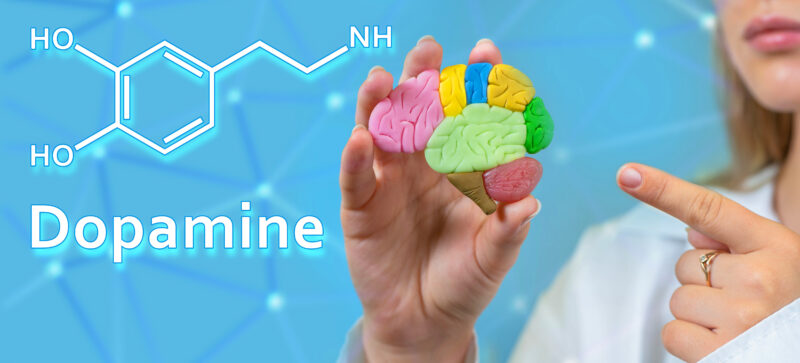The human brain, a complex and intricate organ, is the control center for every thought, emotion, and action. Its structure and function are profoundly impacted by various factors, including the use of substances. Substance use, whether it’s alcohol, nicotine, opioids, or illicit drugs, alters the brain’s chemistry and functioning, leading to significant health and social consequences. This article explores how substances affect the brain, the role of the brain’s reward system, and the critical neurotransmitter dopamine in the context of addiction.
How Substances Affect Your Brain
The brain operates through networks of neurons (nerve cells) communicating via neurotransmitters. Substances interfere with this communication by mimicking natural neurotransmitters, overstimulating the system, or altering the way neurotransmitters are absorbed or produced. For instance, opioids bind to opioid receptors in the brain, mimicking the effects of pain-relieving neurotransmitters but also producing intense feelings of euphoria and leading to addiction. Similarly, stimulants like cocaine and methamphetamine cause excessive releases of dopamine, creating a short-lived “high” that users seek to replicate, often at the cost of their health and well-being.
Substance use can also lead to neuroadaptation, where the brain adjusts to the presence of the drug, leading to tolerance (needing more of the substance to achieve the same effect) and dependence (needing the substance to function normally). This adaptation contributes significantly to the cycle of addiction, making it challenging for individuals to quit using the substance.
Understanding the Reward System
At the heart of the brain’s response to substances is the reward system, a group of structures involved in processing pleasure, motivation, and reward. The reward system is crucial for survival, encouraging behaviors necessary for life, such as eating and procreation. However, substances hijack this system, artificially stimulating it and creating a powerful, memorable experience of pleasure that the brain seeks to repeat.
The activation of the reward system by substances is disproportionate to natural rewards, leading to the prioritization of drug use over healthier activities. Over time, the brain’s anatomy and functioning can change, with neural pathways reinforcing drug-seeking behavior, making it increasingly difficult for individuals to resist the urge to use substances.
“Chronic substance use dulls the brain’s response to dopamine, diminishing the user’s ability to feel pleasure from normally enjoyable activities.”
The Role of Dopamine
Dopamine, a neurotransmitter often dubbed the “feel-good” chemical, plays a pivotal role in the reward system’s functioning. It is involved in regulating mood, motivation, and feelings of pleasure. When a person uses substances, dopamine levels surge, significantly beyond the levels produced by natural rewards, such as food or social interactions.
This dopamine flood reinforces the behavior, teaching the brain to repeat the action that provided the intense pleasure. However, chronic substance use dulls the brain’s response to dopamine, diminishing the user’s ability to feel pleasure from normally enjoyable activities. This reduction in dopamine sensitivity contributes to the cycle of addiction, as individuals may increase their substance use in an attempt to recapture the heightened pleasure they once felt.
To extend our exploration of the brain and substance use, it’s crucial to delve deeper into the long-term effects of substances on brain structure and function, the role of genetics and environment in substance use disorders, and the path forward in terms of treatment and prevention.

The Role of Genetics and Environment
Addiction is a complex disease influenced by a combination of genetic, environmental, and social factors. Research suggests that genetics account for about half of the likelihood that an individual will develop an addiction. Certain genes may predispose individuals to substance use disorders by affecting how they metabolize substances or by influencing the brain’s reward system.
However, genetics is only part of the story. Environmental factors, such as exposure to drugs or alcohol at a young age, stress, trauma, and the availability of substances, also play a significant role in the development of addiction. Social factors, including peer pressure, family dynamics, and socioeconomic status, further complicate the landscape of substance use and addiction.
Treatment and Prevention: A Path Forward
Understanding the brain’s role in substance use and addiction is key to developing effective treatments and prevention strategies. Treatment approaches often combine medication, to help manage withdrawal symptoms and cravings, with behavioral therapies, which aim to modify drug-seeking behaviors and increase coping strategies.
For instance, medications like methadone or buprenorphine can reduce cravings and withdrawal symptoms for opioid addiction, making it easier for individuals to engage in therapy and recovery activities. Behavioral therapies, such as cognitive-behavioral therapy (CBT) and motivational interviewing (MI), help individuals develop skills to resist substance use, replace drug-using activities with constructive and rewarding ones, and improve problem-solving abilities.
Prevention efforts focus on reducing risk factors and enhancing protective factors through education, community programs, and policy measures.
Educating individuals, especially young people, about the risks of substance use, improving access to mental health services, and creating supportive environments can help prevent the onset of substance use disorders.
The importance of addressing the problem from all aspects
The brain’s intricate relationship with substance use underscores the complexity of addiction. Here are 3 suggestions that can be made regarding this issue:
1. It’s a condition that cannot be attributed to a single cause or simplified to a matter of willpower. A comprehensive and holistic perspective is needed.
2. By continuing to unravel how substances affect the brain, society can better address the challenges of addiction through more effective treatments, prevention strategies, and policies that support recovery and reduce the stigma associated with substance use disorders.
3. Understanding the biological, psychological, and social underpinnings of addiction is crucial for fostering empathy, promoting healing, and ultimately, preventing the profound toll substance use can take on individuals and communities.
Long-term Effects on Brain Structure and Function
Substance use can have profound and lasting effects on the brain. Prolonged exposure to substances leads to changes in brain structure, particularly in areas involved in decision-making, judgment, learning, memory, and behavior control. For example, imaging studies have shown that alcohol abuse can lead to brain shrinkage and changes in the structure and functioning of the prefrontal cortex and hippocampus, which are critical for cognitive functions and memory.
Moreover, substances can disrupt the development of the adolescent brain, which continues to mature into the mid-20s. This disruption can lead to cognitive impairments, including problems with attention, memory, decision-making, and impulse control, which may persist long after substance use has ceased.




